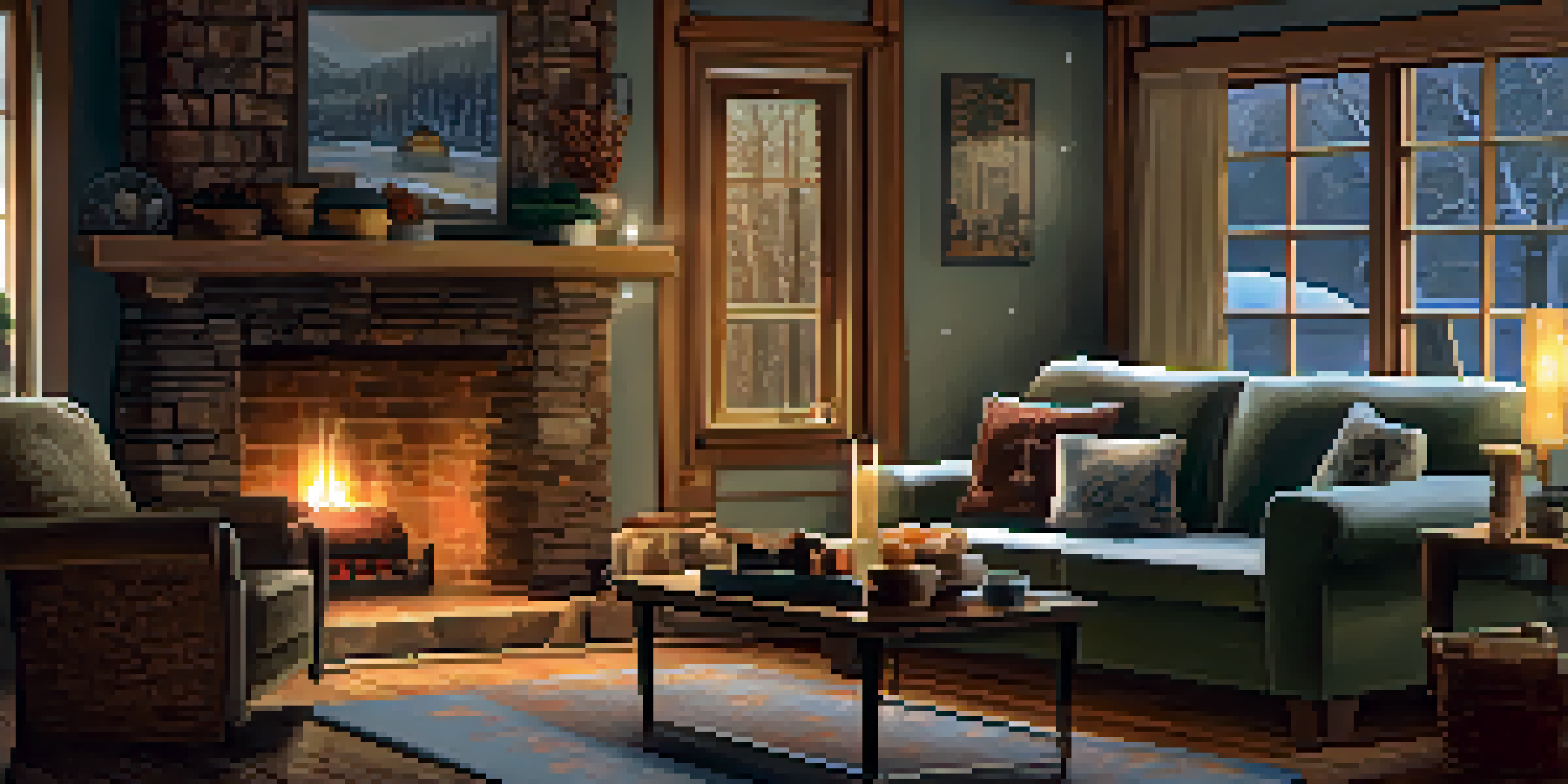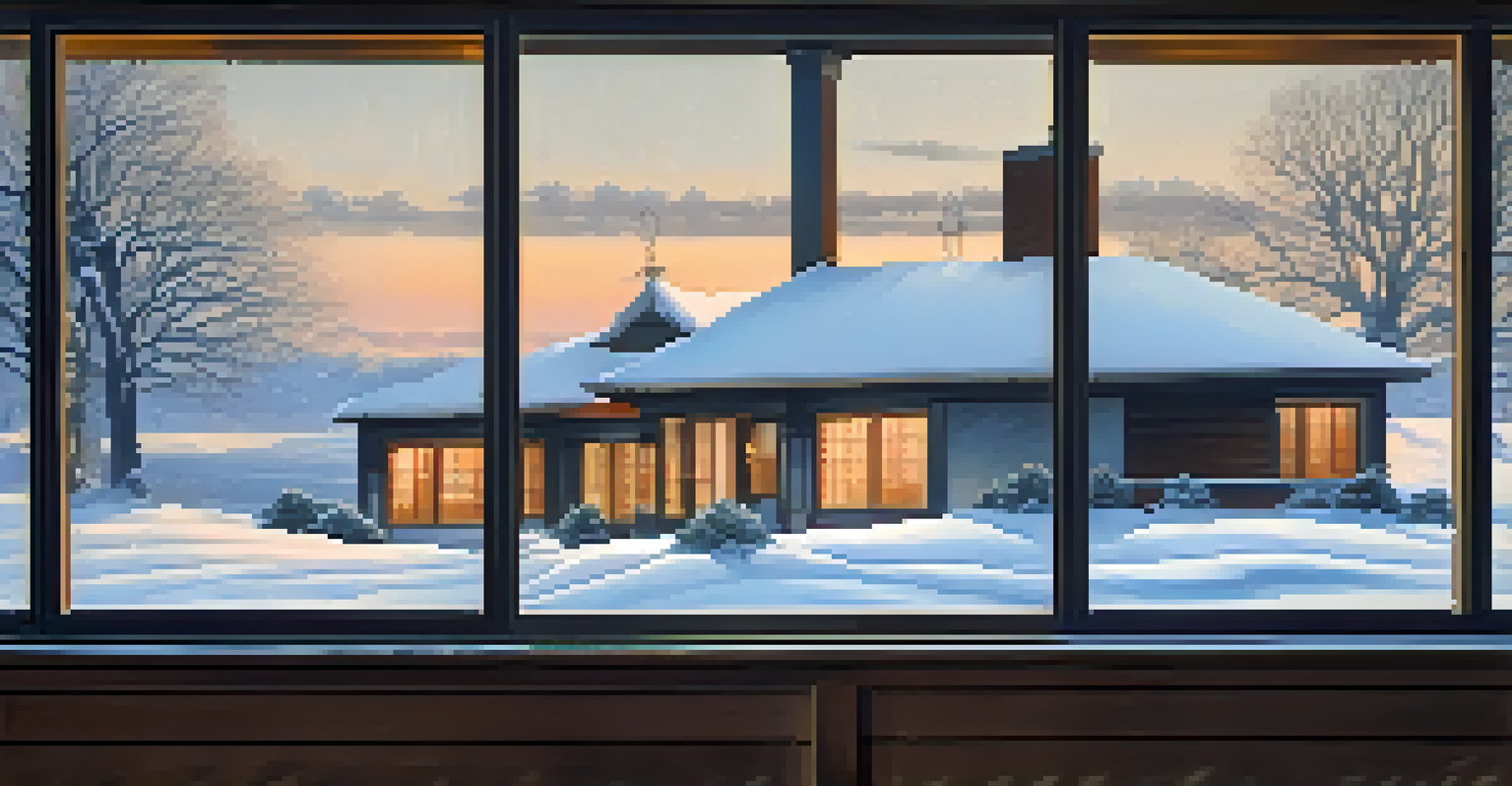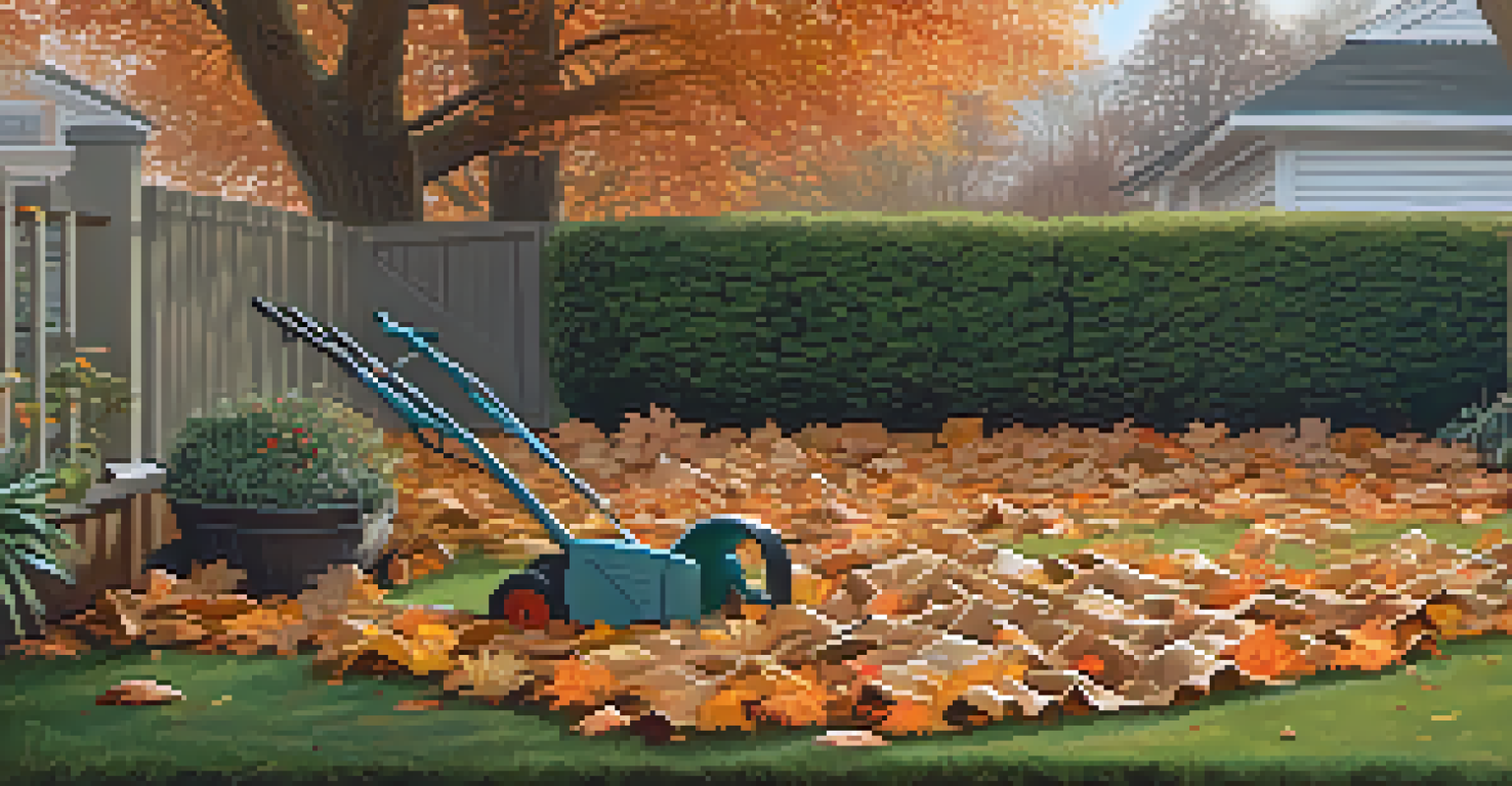Winter Home Maintenance Checklist: Protect Your Property

Inspect Your Heating System for Optimal Performance
As the temperatures drop, it's vital to ensure your heating system is ready to keep you warm. Start by checking your furnace or boiler for any signs of wear and tear. Regular maintenance can prevent costly repairs and ensure efficient operation throughout the winter months.
An ounce of prevention is worth a pound of cure.
Consider scheduling a professional tune-up if you haven't done so recently. Technicians can clean the system, replace filters, and check for any potential issues that might arise during the cold season. A well-maintained heating system not only keeps you comfortable but also saves on energy bills.
Don't forget to test your thermostat and consider upgrading to a smart thermostat if you haven't yet. This upgrade allows for better temperature control and can even help you monitor energy usage, making your home both cozy and efficient.
Seal Windows and Doors to Prevent Drafts
Drafty windows and doors can significantly impact your home's energy efficiency during winter. Start by inspecting the seals around your windows and doors for any gaps or cracks. A simple fix with caulk or weatherstripping can make a world of difference in maintaining a warm indoor environment.

You can also use a candle to check for drafts. Light it near the edges of windows and doors; if the flame flickers, you may have a draft that needs addressing. Sealing these gaps reduces heating costs and keeps the cold air out.
Inspect Heating Systems Regularly
Regular maintenance of your heating system can prevent costly repairs and ensure efficient operation during the winter months.
For an added layer of insulation, consider using thermal curtains. They can help keep the warmth in and the cold out, making your living spaces more comfortable while adding a touch of decor.
Check Your Roof and Gutters for Winter Readiness
Winter weather can take a toll on your roof and gutters, so it's essential to inspect them before the snow falls. Look for any missing shingles or signs of wear that could lead to leaks. Addressing these issues early can save you from significant headaches when snow and ice accumulate.
The best time to repair the roof is when the sun is shining.
Make sure to clear your gutters of leaves and debris. Clogged gutters can lead to ice dams, which can cause water to back up and seep into your home. A little preventive maintenance can go a long way in protecting your property from water damage.
If you're not comfortable with heights, it might be best to hire a professional. They can safely perform a thorough inspection and clean your gutters, ensuring your home is ready to withstand winter weather.
Prepare Your Plumbing to Avoid Freezing Pipes
Frozen pipes can lead to serious damage and costly repairs, so it's crucial to prepare your plumbing for winter. Start by insulating any exposed pipes, especially those in unheated areas like basements or attics. Foam pipe insulation is a simple and effective solution.
Additionally, let your faucets drip during extreme cold spells. This helps relieve pressure in the pipes and can prevent them from freezing. It's a small action that can save you from a big mess later on.
Seal Drafts for Better Efficiency
Sealing gaps around windows and doors can significantly reduce heating costs and keep your home warm.
Don't forget to know where your main water shut-off valve is located. In case of an emergency, you’ll want to be able to turn off the water quickly to minimize damage.
Test Smoke and Carbon Monoxide Detectors
With the heating system running more frequently, checking your smoke and carbon monoxide detectors is crucial. Take a moment to test each unit to ensure they are functioning properly. If you haven’t changed the batteries in a while, now is a great time to do so.
Carbon monoxide is particularly dangerous during winter, as it can build up from faulty furnaces or heaters. Make sure you have detectors installed in key areas, such as near sleeping quarters. This small step can mean the difference between life and death.
Also, consider replacing any outdated detectors, as they have a limited lifespan. Keeping your home safe is essential, and having working detectors is a vital part of that.
Maintain Your Lawn and Garden for Winter Survival
As winter approaches, don't forget about your lawn and garden. Proper maintenance now can ensure that your outdoor spaces remain healthy and vibrant come spring. Start by mowing your lawn one last time and raking up any leaves that may have fallen.
Consider applying a winter fertilizer to give your grass the nutrients it needs to survive the cold. This can help promote growth when the weather warms up again. Additionally, protect sensitive plants by covering them with mulch or burlap as insulation against frost.
Prepare for Winter Emergencies
As winter storms can strike unexpectedly, having an emergency kit ready with essentials can keep your family safe and comfortable.
Lastly, remember to drain and store garden hoses properly to prevent them from freezing and cracking. Taking these steps now will save you effort and expense when the growing season returns.
Inspect Your Home's Exterior for Winter Damage
Before the cold sets in, take a walk around your property to inspect the exterior of your home. Look for any signs of damage to siding, trim, and paint that could become worse with winter weather. Touching up these areas will not only keep your home looking its best but also protect it from moisture damage.
Check for any cracks in the foundation or walls, as they can allow cold air and moisture to enter your home. Fill in any gaps with caulk or appropriate sealant to prevent further deterioration. This small maintenance step can have a significant impact on your home's longevity.

Don't forget to pay attention to outdoor fixtures, such as lights and railings. Ensuring that everything is secure and in good condition will keep your property safe and welcoming for the winter season.
Prepare an Emergency Kit for Winter Storms
Winter storms can strike unexpectedly, making it essential to prepare an emergency kit for your home. Start by gathering items like bottled water, non-perishable food, flashlights, batteries, and a first-aid kit. Having these supplies on hand can keep your family safe and comfortable during power outages or severe weather.
Don't forget to include blankets and warm clothing in your emergency kit. Staying warm is a top priority when the temperatures drop, and having extra supplies can be a lifesaver if you're stuck at home.
Finally, consider adding a battery-operated radio to your kit. This will help you stay informed about weather updates and emergency instructions, ensuring you're prepared for whatever winter throws your way.